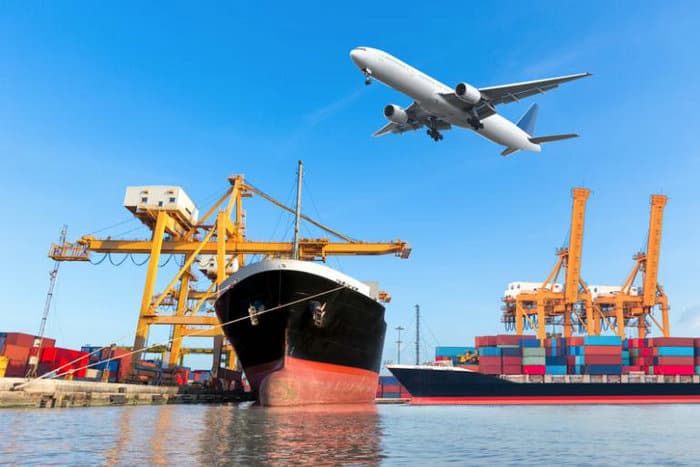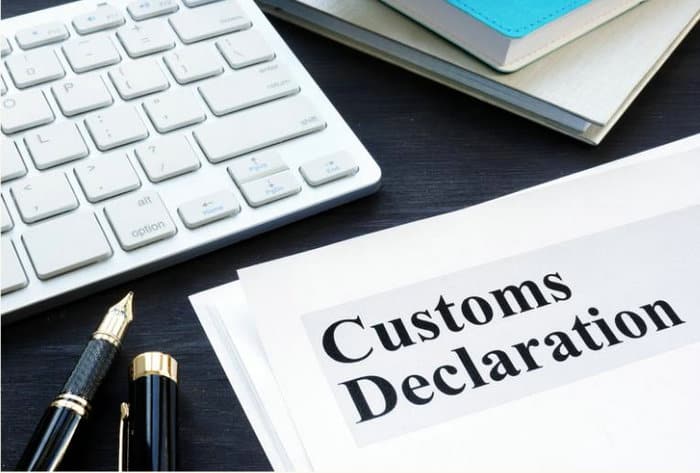
Shipping from China to the United Arab Emirates is a vital component of global commerce, significantly impacting trade dynamics between Asia and the Middle East. As the UAE serves as a commercial hub for the region, importing from China is a common practice for businesses looking to leverage the competitive manufacturing market. Understanding the logistics, regulations, and costs associated with shipment from China is crucial to ensuring efficient and cost-effective operations.
The process involves various transport modes, including sea and air freight, each with its merits and considerations. Sea freight typically offers a balance of cost and transit time, making it a popular choice for many shippers. On the other hand, air freight provides faster delivery at a higher cost, suitable for time-sensitive goods. You must also navigate through customs regulations and documentation, which require meticulous attention to detail to avoid delays and additional expenses.
Understanding Shipping from China to UAE
Shipping goods from China to the United Arab Emirates (UAE) involves understanding various trade routes, shipment methods, and regulations. The UAE is a significant hub for trade in the Middle East, and many businesses import products from China due to its manufacturing prowess.
Modes of Shipping:
- Air Freight: Generally faster but more expensive; suitable for perishable or high-value items.
- Sea Freight: More cost-effective for larger shipments; the transit time is longer.
Timeframes vary depending on the mode of shipping:
- Air freight can take approximately 1-5 days.
- Sea freight might take around 20-35 days.
Major Ports and Airports:
- Ports: Jebel Ali and Port Rashid in Dubai, Khalifa Port in Abu Dhabi
- Airports: Dubai International Airport, Abu Dhabi International Airport
When shipping, you must ensure your goods comply with UAE customs regulations. The documentation you’ll generally require includes a commercial invoice, certificate of origin, packing list, and bill of lading or air waybill.
Incoterms like FOB (Free On Board) or CIF (Cost, Insurance, and Freight) define costs and responsibilities between buyers and sellers. Familiarize yourself with these to negotiate better shipping terms.
To streamline the shipping process, consider partnering with a reliable freight forwarder who understands the nuances of shipment from China to UAE. They can handle logistics and customs clearance on your behalf, providing a hassle-free experience.
Shipping Options
When shipping cargo from China to UAE, you have three primary methods: Sea Freight, Air Freight, and Courier Services. Each shipping method offers different benefits based on your time requirements, budget, and type of cargo.
Sea Freight Shipping
Sea Shipping is a cost-effective solution for large or heavy shipments. There are two options for you to choose based on your needs:
- Full Container Load (FCL): Reserve entire containers for your cargo.
- Less than Container Load (LCL): Share container space with other shippers.
Transit Time: Usually ranges from 20 to 35 days.
Capacity: Ideal for large quantities and heavy goods.
Air Freight Shipping
Air Freight from China to UAE is a faster shipping option. It’s suitable for high-value and time-sensitive shipments.
- Standard Shipping: The usual choice for various goods.
- Express Shipping: Expedited service for urgent deliveries.
Transit Time: Approximately 1 to 5 days.
Capacity: Best for small to medium shipments or important cargo.
Major Ports and Airports

In your efforts to ship containers from China to the UAE, you will rely on a network of major ports and airports. These facilities are the hubs of international logistics and are well-equipped to handle the volume and complexity of such shipments.
Major Seaports
When shipping by sea, you need to be aware of major seaports in both countries that handle shipping from China to the UAE.
| Major Chinese Ports | Major UAE Ports |
| Shanghai Port | Jebel Ali Port (Dubai) |
| Shenzhen Port | Khalifa Port (Abu Dhabi) |
| Qingdao Port | Port Rashid (Dubai) |
| Guangzhou Port | Port Zayed (Abu Dhabi) |
| Xiamen Port | Port of Fujairah |
| Ningbo Port |
Key considerations of the major seaports in China:
China boasts several key maritime gateways that are crucial for shipments to the UAE. As the world’s largest trading nation, its ports are among the busiest.
- Shanghai Port: Situated in the Yangtze River Delta, it is the world’s largest port in terms of container volume.
- Shenzhen Port: Comprising multiple ports like Yantian, Shekou, and Chiwan, it is a major port in the Pearl River Delta region, facilitating a significant percentage of China’s trade with the Middle East.
- Qingdao Port: A major port in Shandong province, it handles many shipments to the Middle East.
- Guangzhou Port: Major shipping hub in Guangdong province with connections worldwide.
- Xiamen Port: Strategically located on China’s southeast coast, large volumes are shipped through here.
Key considerations of the major seaports in UAE:
The UAE serves as a major logistical hub in the Middle East, with ports that are both advanced and strategically located. Here are the prominent ports:
- Jebel Ali Port: This is the largest port in the Middle East and the flagship port of DP World, offering unparalleled access to markets in the Middle East, Africa, and Asia.
- Port Khalifa: With state-of-the-art facilities, Port Khalifa is a key entry point and a major contributor to the UAE’s economy, providing logistics advantages for businesses shipping to and from China.
- Port Rashid: This is one of the busiest ports in UAE, with a prime location in the center of Dubai.
- Port Zayed: The main port for Abu Dhabi, which handles mostly general cargo ships.
- Port of Fujairah: Located outside the Strait of Hormuz, the main port on the Gulf of Oman.
Major Airports
| Major China Airports | Major UAE Airports |
| Shanghai Pudong International Airport | Dubai International Airport (DXB) |
| Beijing Capital International Airport | Abu Dhabi International Airport (AUH) |
| Guangzhou Baiyun International Airport | Sharjah International Airport (SHJ) |
| Shenzhen Baoan International Airport | Al Maktoum International Airport (DWC) |
| Hong Kong International Airport | |
| Chengdu Shuangliu International Airport |
Cost Factors
When it comes to DDP shipping (door to door) from China to the UAE, you need to consider several key cost factors that can significantly influence the overall rates for shipping. The expenses for shipping freight from China to the United Arab Emirates fluctuate based on factors like the dimensions and weight of the goods being transported, whether you choose standard or express delivery, and any taxes or fees levied by customs agencies according to product type and declared value.
Freight Charges
Freight charges are the fees you pay to transport your goods from the origin to the destination. These charges are influenced by the shipping mode (air or sea), the weight and volume of the cargo, and the distance between the shipping points.
Sea Freight Rates
- FCL shipping from China to UAE
| Departure Port | Destination Port | Container 20′ (USD) | Container 40′ (USD) |
| Shanghai | Jabel Ali | 1200 | 1400 |
| Shanghai | Abu Dhabi | 1200 | 1400 |
| Shanghai | Sharjah | 1200 | 1500 |
| Shenzhen | Jebel Ali | 1000 | 1200 |
| Shenzhen | Abu Dhabi | 1600 | 1900 |
| Shenzhen | Sharjah | 1100 | 1300 |
| Ningbo | Jabel Ali | 1200 | 1300 |
| Ningbo | Abu Dhabi | 1200 | 1300 |
| Ningbo | Sharjah | 1200 | 1400 |
- LCL shipping from China to UAE
| Departure Port | Destination Port | USD/CBM (1-3 CBM) | USD/CBM (3-9 CBM) |
| Ningbo | Jebel Ali | 10 | 10 |
| Ningbo | Abu Dhabi | 20 | 50 |
| Ningbo | Sharjah | 20 | 50 |
| Shanghai | Jebel Ali | 10 | 10 |
| Shanghai | Abu Dhabi | 60 | 60 |
| Shanghai | Sharjah | 60 | 60 |
| Shenzhen | Jebel Ali | 5 | 10 |
| Shenzhen | Abu Dhabi | 5 | 10 |
| Shenzhen | Sharjah | 10 | 10 |
Air Freight Rates
| Departure City | Range | Destination Airport | Price Per KG ($USD) |
|---|---|---|---|
| Shanghai | Rate for 100KGS-299KGS | Dubai (DXB) | 4.5 |
| Shanghai | Rate for 100KGS-299KGS | Abu Dhabi (AUH) | 4.5 |
| Shanghai | Rate for 300KGS-1000KGS | Dubai (DXB) | 4.5 |
| Shanghai | Rate for 300KGS-1000KGS | Abu Dhabi (AUH) | 4.5 |
| Shanghai | Rate for 1000KGS+ | Dubai (DXB) | 4 |
| Shanghai | Rate for 1000KGS+ | Abu Dhabi (AUH) | 4 |
| Guangzhou | Rate for 100KGS-299KGS | Dubai (DXB) | 4.5 |
| Guangzhou | Rate for 100KGS-299KGS | Abu Dhabi (AUH) | 5 |
| Guangzhou | Rate for 300KGS-1000KGS | Dubai (DXB) | 4.5 |
| Guangzhou | Rate for 300KGS-1000KGS | Abu Dhabi (AUH) | 5 |
| Guangzhou | Rate for 1000KGS+ | Dubai (DXB) | 3.5 |
| Guangzhou | Rate for 1000KGS+ | Abu Dhabi (AUH) | 4 |
Insurance Costs
Shipping insurance is crucial for protecting your goods against loss, damage, and theft during transit. Insurance costs are typically a percentage of the declared value of your shipment, usually around 0.5% to 2%. The exact rate will depend on the nature of the goods, the shipping mode, and the level of coverage you opt for.
Customs Duties
Customs duties are fees imposed by the government on imported goods. In the UAE, the standard customs duty is 5% of the CIF value (Cost, Insurance, and Freight) of most imported goods. However, there are exceptions and specific classifications for certain items which may incur different duty rates or enjoy exemptions. You can consult the UAE Federal Customs Authority for the most accurate and updated information on customs duties.
Transit Time
Transit time is crucial in planning your logistics from China to the UAE. Understanding the time frames for different modes of transport ensures efficient and timely delivery.
Sea Shipping Transit Time
- FCL shipping time
| Departure Port | Destination Port | Estimated Transit Time (days) |
|---|---|---|
| Shanghai | Jebel Ali | 21 |
| Shanghai | Abu Dhabi | 25 |
| Shanghai | Sharjah | 32 |
| Shenzhen | Jebel Ali | 16 |
| Shenzhen | Abu Dhabi | 21 |
| Shenzhen | Sharjah | 25 |
| NINGBO | Jebel Ali | 21 |
| NINGBO | Abu Dhabi | 25 |
| NINGBO | Sharjah | 32 |
- LCL shipping time
| Departure Port | Destination Port | Estimated Transit Time (days) |
|---|---|---|
| Ningbo | Jebel Ali | 20 |
| Ningbo | Abu Dhabi | 35 |
| Ningbo | Sharjah | 35 |
| Shanghai | Jebel Ali | 20 |
| Shanghai | Abu Dhabi | 25 |
| Shanghai | Sharjah | 25 |
| Shenzhen | Jebel Ali | 20 |
| Shenzhen | Abu Dhabi | 35 |
| Shenzhen | Sharjah | 35 |
Air Shipping Transit Time
Air freight is significantly faster and is ideal for high-priority shipments.
| Departure City | Destination Airport | Estimated Transit Time (days) |
|---|---|---|
| Shanghai | Dubai (DXB) | 2-3 |
| Shanghai | Abu Dhabi (AUH) | 1 |
| Guangzhou | Dubai (DXB) | 1 |
| Guangzhou | Abu Dhabi (AUH) | 2-3 |
Customs Clearance

Gaining a thorough comprehension of the procedures and documentation involved in customs clearance is extremely important to guarantee that goods shipped from China enter the United Arab Emirates without delays or issues. The following sections detail the essential paperwork and procedures.
Documentation for Exports
For exports from China, you must ensure that your goods are accompanied by the necessary shipping and customs documentation to facilitate customs clearance. This typically includes:
- Commercial Invoice: A detailed invoice from the seller to the buyer that provides the value and description of the goods.
- Packing List: An itemized list of all goods in the shipment along with their corresponding details, such as weight and packaging type.
- Certificate of Origin: This is to verify the goods were manufactured in China.
- Bill of Lading (B/L) or Air Waybill (AWB): A contract between the goods owner and the carrier about the type, quantity, and destination of the goods being carried.
Import Customs Process in UAE
Upon arrival in the UAE, your shipment will undergo the following import customs process:
- Presentation of Documents: Submit all relevant documentation, as listed above, to UAE customs. Also include the import permit and any other specific documents required by UAE law.
- Inspection and Valuation: Customs officials will inspect the shipment and determine its value for assessing duties and taxes.
- Payment of Duties and Taxes: You are responsible for paying the calculated duties and taxes. The Harmonized System (HS) code of the products determines the duty rate to be applied.
- Release of Goods: Once all duties are settled and compliance with regulations verified, your goods will be released for onward transportation within the UAE.
To avoid delays, it’s important to work with a trusted freight forwarder who is familiar with the nuances of the UAE import regulations.
Incoterms for Shipping
When you’re shipping from China to the UAE, Incoterms define the responsibilities of buyers and sellers. They determine how costs and risks are allocated. Understanding these terms is crucial for a smooth transaction.
EXW and FOB
EXW (Ex Works) means the seller makes the goods available at their premises, and you are responsible for all costs and risks involved in bringing the goods from there to your destination.
- Seller’s responsibilities: Provide goods, pack for export (unless otherwise agreed), and assist you with obtaining any necessary export documentation.
- Your responsibilities: Pay all transportation costs, assume risk of loss of or damage to the goods from the time they have been made available, clear goods for export, and arrange for import clearance.
FOB (Free On Board) means the seller must load the goods on board a vessel nominated by you, at a named port of shipment.
- Seller’s responsibilities: Load goods on board and clear goods for export.
- Your responsibilities: Assume all costs and risks from the point the goods are on board the vessel, arrange for transportation, and clear goods for import.
CIF and DAP
CIF (Cost, Insurance, and Freight) includes the price of goods, insurance, and all transportation and miscellaneous charges to the named destination port.
- Seller’s responsibilities: Pay the costs and freight to bring the goods to the destination port and provide minimum insurance.
- Your responsibilities: Clear goods for import and pay for any additional insurance.
DAP (Delivered At Place) requires the seller to deliver the goods to a place agreed upon by you and the seller.
- Seller’s responsibilities: Bear all risks and costs associated with bringing the goods to the named place, clear goods for export.
- Your responsibilities: Pay for unloading costs, clear goods for import, and pay any import duty.
Shipping Challenges
When you ship from China to the UAE, you face specific barriers that can affect the timing and cost of your shipments. Understanding these challenges is crucial for efficient and successful shipping operations.
Regulatory Challenges
The regulatory environment for shipping between China and the UAE can be complex due to stringent customs procedures and varying trade regulations. Customs clearance in the UAE involves documentation that you must accurately prepare, including a detailed description of goods, invoices, and certificates of origin. A slight mismatch or misdeclaration can lead to delays and penalties. Additionally, be aware of the import/export restrictions; items like ivory and products containing cryptography are restricted and may require special approvals.
Operational Challenges
In terms of operational hurdles, you need to navigate through a series of logistical considerations. Weather conditions (e.g., fog and sandstorms) can severely disrupt shipping schedules. It’s important to anticipate these factors and plan for potential delays. Moreover, port congestion in major hubs, especially during high season, can extend the wait times for berthing and unloading. Balancing your shipping modalities, choosing the correct ports, and working with reliable logistics providers are essential to mitigate these operational issues.
E-commerce and Dropshipping
In the realm of online commerce, understanding how goods move from point A to B is crucial, and you’ll find that effective strategies are the backbone of successful transactions from China to the UAE.
E-commerce Fulfillment
When you engage in e-commerce, your fulfillment method chosen from China to the UAE impacts efficiency and customer satisfaction. You can opt for bulk shipping, where large quantities of goods are stored in your warehouse in the UAE. This method requires substantial upfront investment but saves on per-item shipping costs. Alternatively, direct shipping allows you to send products straight from the supplier in China to your customers in the UAE, which can minimize warehousing costs and simplify logistics.
Dropshipping Considerations
Dropshipping provides you with a lean start-up model for e-commerce, where you don’t keep products in stock. Instead, when you sell a product, you purchase it from a third party in China and then ship it directly to your customer in the UAE. This method requires a careful selection of reliable suppliers and an understanding of shipping times and costs. Here’s a brief layout of the primary dropshipping considerations:
- Supplier Reliability: Choose suppliers with robust production capabilities and credible track records to avoid customer dissatisfaction.
- Shipping Time: Customer expectations are managed by clearly communicating delivery times, which can be longer due to international shipping.
- Import Duties: Inform yourself of any applicable duties or taxes your customer may incur, as these can impact the overall cost and competitive pricing.
By keeping these aspects in check, you position yourself for a smoother operation within the global e-commerce framework.
Why Choose Us? Luckystar Logistic
Established in 2022, Luckystar is an esteemed member of the Federal Maritime Commission (FMC) and operates as a Non-Vessel Operating Common Carrier (NVOCC). The company’s mission is to deliver superior service quality at reduced costs, primarily serving China, the USA, Canada, and Europe. With core team members boasting over 20 years of experience in logistics, this shipping agent in China brings considerable expertise to the table. Since its inception, the shipping company has been dedicated to offering global door to door transport and logistics solutions, emphasizing dependability, adaptability, and responsiveness.
We’re not just a company; we are transportation experts! Offering industry-leading solutions, we take pride in providing premium freight forwarding services at a fraction of the cost of other freight forwarders, both in China and across the globe. Here’s why partnering with us is the smart move:
Accuracy You Can Count On:
Say goodbye to delivery delays and hello to timely delivery, which is vital for businesses needing to deliver goods swiftly to their customers.
Your Passport to Global Reach:
Our wide network of delivery destinations virtually covers the entire globe, offering extraordinary opportunities for businesses aiming to expand their reach. You can be assured that your package will find its way to almost any corner of the world, taking your business global!
Track with Ease:
Say goodbye to guesswork. Our stringent procedures afford you a live tracking mechanism, making it easy for you to follow your shipment’s progress at every stage of its journey. Stay informed and enjoy peace of mind, knowing exactly where your shipment is anytime you need to know.
Personalized Service, Every Step of the Way:
One of our dedicated team members will personally oversee your shipment from start to finish. This, coupled with our commitment to transparency and constant communication, ensures you are kept updated on the progress of your cargo every step of the way.
When shipping hazardous materials, it’s crucial to work with experienced service providers to ensure that your shipment is handled safely and efficiently. By partnering with us, you can have peace of mind knowing that your shipment is in good hands.
Are you looking for an experienced freight forwarder to assist you in shipping? Contact us. We’re always ready to help. Offering the unbeatable cheapest shipping rates for international shipping, our shipping services are more affordable than you’d believe. Don’t hesitate! Get in touch with us today.
